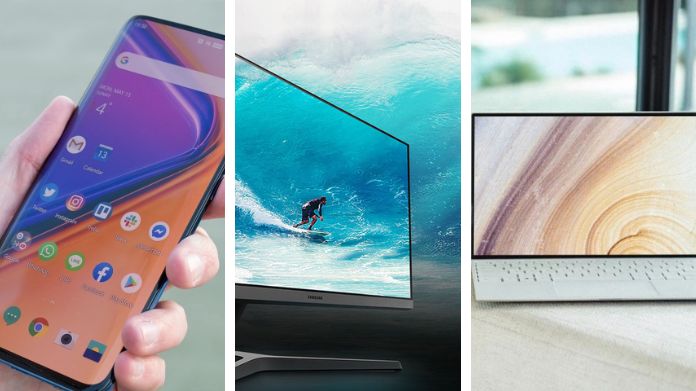Have you ever wondered about the frame around your screen? It’s called a bezel, and it’s been shrinking on modern devices. But what is a bezel, and why has it become kinder?
In this post, we’ll delve into the fascinating world of bezels, discovering their definition, function, and the reasons behind their decreasing presence.
So come along with us as we solve the riddles and learn about the changing nature of bezels with Okayreview.
Let’s dive in and discover why bezels have become less meaningful and how they positively impact our digital experiences.
Table of Contents
What Are Bezels Means?
Bezels refer to the boundary between a device’s display and its physical frame in the technology sector.
They have become an important concern in electronics design, performing services such as enhancing endurance and shielding the screen.
Originally used to describe the setting surrounding watch faces in the jewelry business, the phrase has recently been broadened to cover device frames.
With small front-facing frames, modern gadgets aspire towards “slim bezels” or even “bezel-less” designs. However, removing bezels is frequently unfeasible.
Along with other design modifications, the small-bezel trend is converting smartphones into powerful microcomputers, prompting concerns about future designs and the prospect of eradicating the residual “bezel chin” under smartphone displays.
What is the Purpose of Bezels?
Bezels in electronic gadgets like smartphones, tablets, and displays perform various critical tasks.
For starters, bezels give the device structural strength by functioning as a frame that holds the display in place and protects it from harm.
They are a buffer between the sensitive screen and the outside world, protecting it from inadvertent bumps, knocks, or scratches.
Also, bezels include important components like sensors, front-facing cameras, speakers, and buttons. These components must be carefully positioned for the best operation and user experience.
Furthermore, bezels add to the device’s ergonomics by providing a space for users to hold the device without accidentally triggering touch inputs on the screen.
They help grip the device securely and prevent accidental touches, ensuring a smoother user experience.
Why is World Move Towards the Bezel-Less Designs?
 For multiple reasons, the world has been moving towards bezel-less designs in different electronic gadgets, notably smartphones.
For multiple reasons, the world has been moving towards bezel-less designs in different electronic gadgets, notably smartphones.
1. Enhanced Display Experience
Bezel-less designs enable bigger displays to be housed within the same overall device dimensions.
It leads to a more immersive viewing experience since consumers may enjoy the material on a bigger display without sacrificing the device’s mobility.
2. Aesthetic Appeal
Bezel-less designs have a sleek and futuristic appearance. Devices with thin bezels are visually appealing and luxurious, attracting the attention of consumers who value cutting-edge design.
3. Maximizing Screen-to-Body Ratio
Bezel reduction helps to maximize the screen-to-body ratio, which implies more screen real estate and less wasted space.
Users may now enjoy a wider display area for content consumption, gaming, work, and multimedia.
4. Technological Advancements
Display advancements such as OLED and AMOLED have created flexible, bezel-less panels.
These advancements have fuelled the creation of smartphones with thin bezels, pushing the limits of what is possible in terms of design and display quality.
5. Competitive Market
Manufacturers aim to differentiate their goods in the highly competitive electronics business.
Bezel-less designs have been a crucial selling factor since they provide a distinct selling proposition and distinguish devices from the competition.
7. User Preferences
Larger displays and immersive experiences are becoming increasingly important to consumers.
Bezel-less designs adapt to these tastes by providing devices with a larger visual experience and a more engaging UI.
8. Design Evolution
The transition to bezel-less designs signifies device aesthetics and engineering advancement.
It demonstrates how miniaturization and maximizing useable screen areas have advanced, pushing the boundaries of what was previously considered conceivable.
What are the Pros and Cons of Bezel-Less Design?
Pros
- Increased Screen Size
- Modern and Sleek Aesthetic
- Enhanced Immersion
- Compact and Portable
Cons
- Limited Grip Area
- Vulnerability to Damage
- Compromised Durability
- Compatibility with Accessories
Frequently Asked Questions
Q. Why do phones still have bezels?
Ans. The bezel protects the more delicate glass from impact, adds strength to the whole device, and is less flexible. On the phone, the bezel serves as both the WiFi and cellular antennas.
Q. Is the bezel important on a watch?
Ans. The watch determines the function of a watch bezel. All bezels hold The watch crystal in place, whether fixed or rotating. Rotating bezels can also be used as timers, dual time zone indications, compasses, and other functions.
Our Thoughts
So, here we have explored the concept of bezels and the reasons behind their evolution from prominent frames to slimmer or even bezel-less designs.
Bezels play a crucial role in providing structural integrity, housing components, and enhancing user experience in electronic devices.


Great read! I never realized how much thought goes into something as simple as a bezel. The shift toward bezel-less designs shows how technology and aesthetics are evolving together. Thanks for breaking it down so clearly!